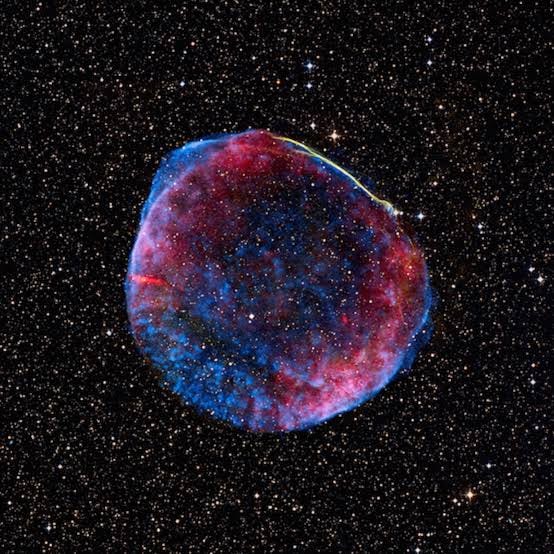We have loved the stars too fondly to be fearful of the night - Sarah Williams
Greetings, fellow scientist.
I hope you’ve been enjoying the precious gifts of nature: the beautiful skies and the starry nights. I am pretty sure that you must have wondered about how far are those bright points in the sky and what is the best way to know it.
We cannot just point our finger at a star and tell how far away it is. Even light, which travels at speed of 300,000 km/sec in vacuum, takes years to reach us from those massive distant objects. But it is the fastest thing we know, so it plays an important role in answering many important questions about our universe such as measuring the distances of faraway galaxies and stars.
A natural question arises here:
Why is measuring such large distances important to us?
It turns out that light takes about eighty years to travel from the constellation, the Big Dipper to the earth. The Big Dipper as we see it today, is actually what it looked like 80 years ago. By looking farther in space, we look further in time and hence we are looking at the younger universe. Astronomers use this data to estimate the age of our universe.
Two commonly used units for measuring astronomical distances are:
Light-Year (ly)
The distance travelled by light in a year is called a light-year. It is approximately equal to 9.46 trillion kilometres.
Astronomical Unit (au)
It is roughly the distance of the Earth from the Sun. Of course, the distance of the Earth from the Sun varies as it revolves in its elliptical orbit. 1 AU is approximately equal to 150 million kilometres.
Three basic techniques are usually implied to measure such enormous distances:
Trigonometric Parallax
Parallax is the difference in the apparent position of an object when viewed along two different lines of sight.
Do this little exercise:
Hold your arm up in a thumbs-up position. Close your left eye, now open your left eye and close the right eye. The thumb will move while the background remains in place.
The farther your thumb is, the lesser it moves against the distant background.
The stars are very far. So how can we measure an observable parallax related to stars?
Even telescopes of very high resolution on opposite sides of the equator cannot measure this movement as it is too small. Here is a solution:
We can make use of the revolution of the earth around the sun. If we measure the position of the sun in summer and then in winter, there is a considerable movement of stars against the background of the distant stars and galaxies. Hence, we can measure the distance to stars up to a few thousand light-years i.e. the stars within our own Milky Way.
Standard Candles
Standard candles are the indicators or objects whose intrinsic luminosity or brightness is known.
It turns out that the amount of light received from a bulb held by a friend moving away decreases by the factor of distance squared. Comparing the brightness of a source at a distance and its original intrinsic brightness, the distance of the source can be measured.

In space, a standard candle is a special type of star called a cepheid variable. These are unstable stars that expand and contract after a fixed interval, causing the luminosity to vary. Knowing the frequency of this cycle allows us to calculate its original luminosity.
The more luminous a star is, the slower it changes its brightness.
By comparing the brightness we receive from the star here on earth to the brightness we have calculated by this method, we can calculate the distance of the stars as far as 40 million light-years.
Type 1a Supernovae
Another type of standard candle is a Type 1A Supernova. A Supernova is a stellar explosion that results when a star runs out of its fuel and is one of the several ways a star may end its life. Supernovae can outshine its entire galaxy when it happens. So even if we can’t see the individual stars, we can still measure the distances to that galaxy.

Using supernovae as standard candles, we can measure the distance of stars up to several billions of light-years.
The size and age of our universe are beyond our wildest imagination. The dimensions of our universe are so vast that ordinary units of length measurement are of little use.
We live on an insignificant planet of a humdrum star lost between two spiral arms in the outskirts of a galaxy, tucked away in some forgotten corner of a universe in which there are far more galaxies than people.1 The Universe never ceases to amaze us.
You May Also Like:
Chapter 7: The Backbone of Night, Cosmos, Carl Sagan




